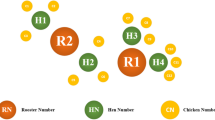Abstract
Optical character recognition (OCR) is the development of mining text from an appearance. The key purpose of these recognitions is to achieve high editing from various docs or images. In a more reliable approach, OCR also deals with the detection of words to reserve a structure of the various large documents. It is noticed that most of the investigators put much efforts to achieve a high recognition rate with low error rates probability for an English character recognition, but failed due at the process of feature extraction. So, the proposed technique is focused on this problem of feature extraction and feature vector selection process. In this paper, independent component analysis (ICA) is used to extract out meaningful information as features and hybrid optimization are used to reduce the dimensionality of the vectors, i.e., particle swarm optimization (PSO) and firefly algorithm (FFA). ICA is normally assumed as huge operations on data to extract variables which are presumed to be linear and nonlinear combinations of certain unknown unidentified variables. The extracted independent feature values are organized in the form of a feature vectors which are closely related to the blind source separation. Then, the output of the feature vector will be the input to the optimization for the instance selection which is done by using hybrid PSOFFA. Afterward, the classification is performed using well-established BPNN, i.e., backpropagation neural network. The classification stage is the decision-making part of the recognition system. The results and discussion elaborate that the proposed approach is well efficient and effectual to reduce the error rate probabilities and to achieve high classification rates.













Similar content being viewed by others
References
Y. Lee, J. Song, Y. Won, Improving personal information detection using OCR feature recognition rate. J. Supercomput. 75(4), 1941–1952 (2019)
B.V. Dhandra, G. Mukarambi, M. Hangarge, A recognition system for handwritten Kannada and English characters. Int. J. Comput. Vis. Robot. 2(4), 290–301 (2011)
G. Zuccon, A. Nguyen, A. Berghaim, N. Grayson, Cancer reporting from OCR free-text pathology reports, (2012)
P. Sahare, S.B. Dhok, Robust character segmentation and recognition schemes for multilingual indian document Images. IETE Tech. Rev. 36(2), 209–222 (2019)
S. Chaudhary, S. Garg, R. Sathyaraj, A. Behera, An approach for optical character recognition on grid infrastructure using Kohonen neural network, Int. J. Adv. Res. Comput. Sci. 8(3), (2017)
K.A. Hamad, M. Kaya, A detailed analysis of optical character recognition technology. Int. J. Appl. Math. Electr. Comput. 4(1), 244–249 (2016)
M. Kadyan, A review on character recognition using OCR algorithm, J. Netw. Commun. Emerg. Technol. (JNCET) , 7(5) (2017)
T.C. Wei, U.U. Sheikh, Ab Al-Hadi Ab Rahman. Improved optical character recognition with deep neural network. In Signal Processing and Its Applications (CSPA), 2018 IEEE 14th International Colloquium on, pp. 245–249. IEEE, (2018)
P.P. Bairagi, G. Dulal, Optical character recognition for hindi. Int. Res. J. Eng. Technol. (IRJET), 5(5), (2018)
P. Xu, Research of standard and handwritten english letter recognition system based on the PSOBP neural network, IEEE (2011)
S. Khalid, T. Khalil, S. Nasreen, A survey of feature selection and feature extraction techniques in machine learning. In Science and Information Conference, pp. 372–378. IEEE, (2014)
J.E.M. Adriano., K.A.S. Calma, N.T. Lopez, J.A. Parado, L.W. Rabago, J.M. Cabardo, Digital conversion model for hand-filled forms using optical character recognition (OCR). In IOP Conference Series: Materials Science and Engineering, vol. 482, no. 1, p. 012049. IOP Publishing (2019)
U. Pavithra, M.R. Sneha, T. Ravichandra, V.M. Aparanji, OCR System for automating answer script marks using auto resonance network. In International Conference on Communication and Signal Processing (ICCSP), pp. 0857–0861. IEEE (2019)
Author information
Authors and Affiliations
Corresponding author
Additional information
Publisher's Note
Springer Nature remains neutral with regard to jurisdictional claims in published maps and institutional affiliations.
Rights and permissions
About this article
Cite this article
Zanwar, S.R., Shinde, U.B., Narote, A.S. et al. Hybrid Optimization And Effectual Classification For High Recognitions In OCR Systems. J. Inst. Eng. India Ser. B 102, 969–977 (2021). https://doi.org/10.1007/s40031-021-00604-7
Received:
Accepted:
Published:
Issue Date:
DOI: https://doi.org/10.1007/s40031-021-00604-7




